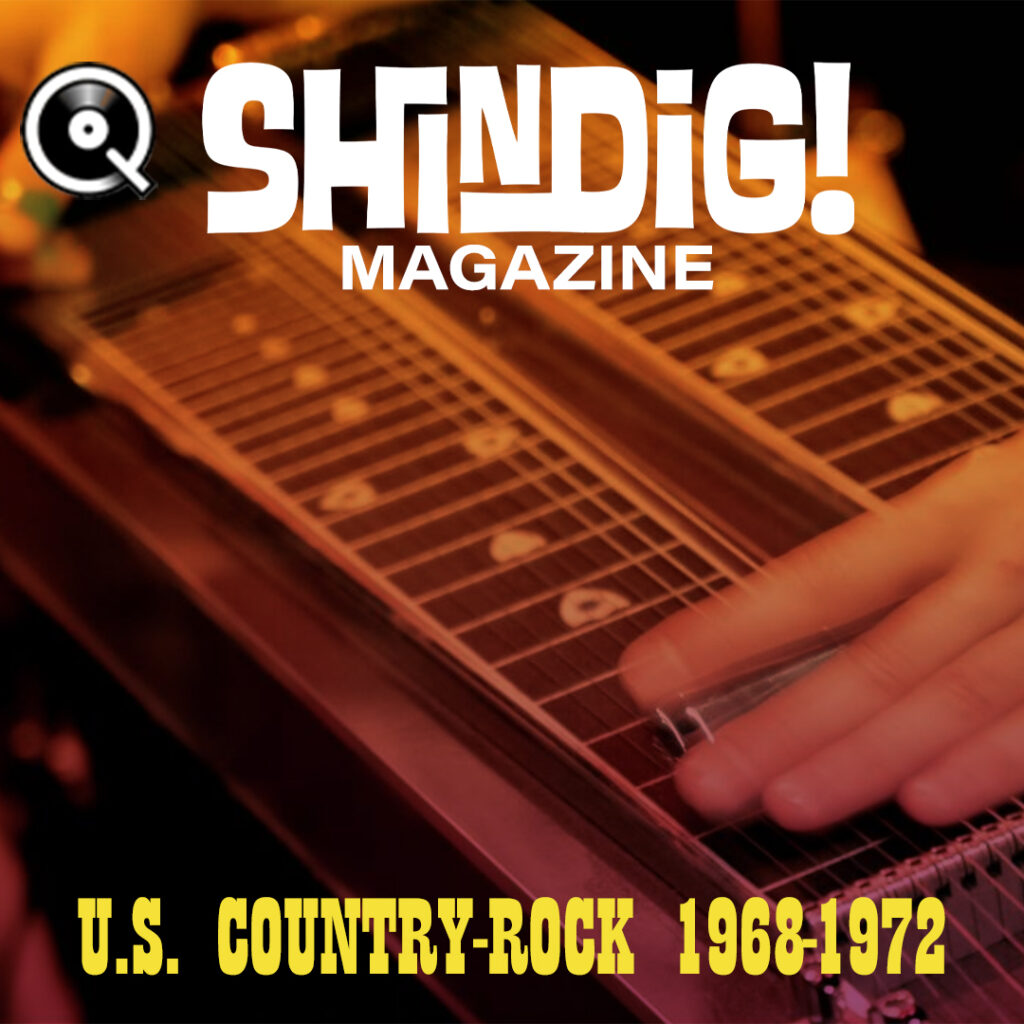Exclusive Shindig! Qobuz playlist #4: U.S. Country-Rock 1968-72
We’re very excited to be media partners with the truly unique online streaming platform and download store Qobuz. The fourth of our monthly bespoke playlists, which take in all manner of genres and sub-genres, scenes and beyond, then and now, focuses on the pioneering birth of country-rock in America

Play here or use the scrollable frame with track list the bottom of the page. You can sign up for a free trial today. Plans start from £10.83 per month. For more on Qobuz read our interview with MD Dan Mackta here
While the birth of country-rock can arguably be traced back to the origins of rock ‘n’ roll itself (that mid-50s fusion of hillbilly music, rhythm and blues, jazz and gospel that changed everything), the notion of “country-rock” that most of us now recognise as a genre or movement unquestionably coalesced in 1967/68. As rock bands emerged blinking from the lurid excesses of psychedelia and The Summer Of Love, the U.S. music scene swung to one side: back to acoustic instruments, romantic/nostalgic songcraft and the simpler, purer forms that proliferated before Beatlemania redefined rock.
Countless rural-rock bands sprang up in the U.S., praying at the altar of The Byrds, Dylan and The Band, while espousing the quiet joys of going back to their roots/the country/the road and drenching their records in pedal steel guitar. Established stars experimented, with predictably variable results.
Nineteen sixty-seven saw Dylan recuperating in Woodstock and making rootsy, down-home music with the musicians who would shortly become The Band (who we’ve consciously omitted from our playlist, along with other hugely influential yet country-adjacent artists like Bobbie Gentry and Little Feat) while L.A. vanguard acts like The Byrds, Buffalo Springfield and Gene Clark & The Gosdin Brothers strived to showcase their country leanings on ground-breaking album releases.
We begin our journey in 1968, with many of those figures looming large. The Byrds, under the fleeting guidance of Gram Parsons (see also The International Submarine Band and Flying Burrito Brothers), turned in the fully-fledged country album Sweetheart Of The Rodeo; Buffalo Springfield broke up but not before gifting us Richie Furay’s lilting ‘Kind Woman’ and sewing the seeds of Poco; former Byrd Gene Clark meandered through a number of aggregations, his association with Doug Dillard resulting in two albums and soaring non-album single ‘Why Not Your Baby’. Doug’s brother and former bandmates in The Dillards were both popular and influential, yet never quite found their place despite crafting two of the era’s finest albums for Elektra.
The Gosdin Brothers represented another aspect of country-rock’s renaissance: the Bakersfield sound, a distinctly Californian twist on country that rose to prominence in the late ’50s and early ’60s with the success of Buck Owens and Merle Haggard, and gave voice to producer Gary Paxton and guitarist supreme Clarence White, whose unique tones can be heard on our selections by the Gosdins, The Byrds (who he joined permanently in ’68), The Spencers and Leon Copeland.
The Everly Brothers – inspiration to countless singers and groups earlier in the decade – returned to their roots on, um, Roots, the ’68 album that found them blurring the traditional and the progressive. Ron Elliott of The Beau Brummels handled the arrangements and contributed two songs, including ‘Turn Around’, also cut by the Brummels themselves for the same year’s unsung Bradley’s Barn. Similarly, former teen sensation Rick Nelson made Bright Lights & Country Music as early as ’66 before hooking up with The Stone Canyon Band and crafting the immaculate Rick Sings Nelson, which contains seductive road song ‘California’.
The Brummels weren’t alone in appearing on the face of it to be a pop act that had suddenly grown country cojones overnight. The impact of ’68’s roots-rock revival touched practically all major league US artists – from The Beach Boys and Dylan down. The Lovin’ Spoonful saluted them good ol’ ‘Nashville Cats’ back in ’66 but it’s post-John Sebastian ’68 single ‘Never Going Back’ that takes us on a journey. Michael Nesmith, always a Texas boy at heart, steered The Monkees (or at least the session musicians he was using that day) through numerous experiments in country-rock, many of which, like ’68’s ‘If I Ever Get To Saginaw Again’, remained unheard for over 20 years. Nesmith then led The First National Band through three albums in under a year, finally giving Monkees-era cuts like ‘The Crippled Lion’ some exposure. The Association’s ‘Dubuque Blues’ is borderline but sneaks onto our playlist purely by virtue of being so damn good.
Of the West Coast rock fraternity, The Grateful Dead, Moby Grape, Nitty Gritty Dirt Band and Sir Douglas Quintet were early adopters, as was Dead spin-off New Riders Of The Purple Sage. A wave of singer-songwriters such as Eric Andersen and Jim Ford felt the country funk. First lady of folk Judy Collins doffed her five-gallon hat on ’68’s Who Knows Where The Time Goes with her reading of Ian Tyson’s ‘Someday Soon’; Tyson and wife Sylvia’s Nashville is inconsistent but does include the gorgeous ‘Farewell To The North’.
We’re barely scratching the surface here. We hope these songs will lead you to more songs and their parent albums by these artists and more. You enjoy, y’all, you hear?
© Andy Morten/Shindig! magazine in partnership with Qobuz

